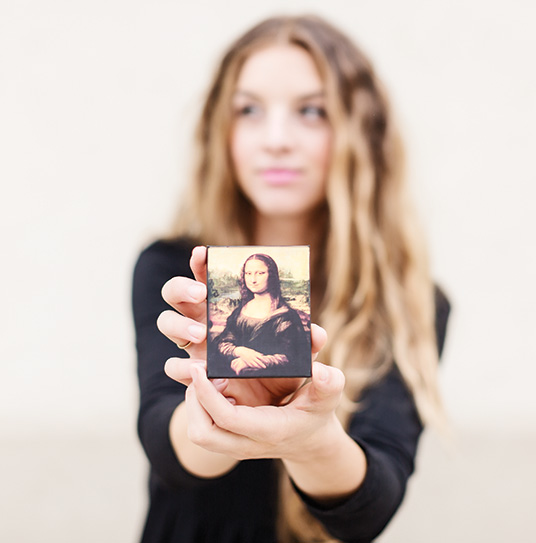Chapter Thirty-Three. Keep the Edges Wild

When Linford and his wife Karin moved from the city to a farm, Linford’s father gave them some advice: “Leave the edges wild.” It was a curious suggestion for someone who was new to a rural land. Linford’s dad was a bird watcher, and he knew that if you make a farm too perfect, you won’t leave any space for the native birds. He said, “Leave the edges wild and let the birds have their hidden places for their untamed music.” As a singer-songwriter duo, Linford and Karin picked up on that phrase and integrated the spirit of it into their work. The phrase became a metaphor for how they approached music and life. It wasn’t just about the birds, but about how to provide space for the cultivated and untamed aspects of life to thrive. If the neat rows of vegetables provided sustenance for the body, then the wild edges would provide it for the soul.
Beautiful Mystery
In one interview Linford explained, “Music is one of those unseen, powerful gifts or mysteries that we can’t hold in our hands. The ancient Greeks thought of music as the opposite of astronomy. Astronomy was about discovering and mapping the furthest reaches. Music was all about discovering the unknown.” My own favorite music isn’t perfect or over-produced, but rather leaves space for the mysteries of life to be explored. Music that’s too perfect sounds like it came from a machine. Rough and wild edges give music some soul.
Leaving the edges wild is a great mantra for any creative pursuit. Life can become so pasteurized and predictable that there isn’t any space left for mystery or surprise. Wild edges create a zone for the unfinished and untamed to thrive. Einstein once said, “The most beautiful thing we can experience is the mysterious,” and it’s true. Think of your favorite song, book, movie, or romantic love—you can only explain it so far, and there is always an intangible and incomprehensible element that resonates within.
Our deepest experiences cannot be rationally explained like rows of soybeans on a farm. The most beautiful, most wonderful, and most magnificent push past the barriers of our limited minds. Where words fall short, art steps in. Art, music, photography, film, poetry, and painting help us articulate hidden truths. Whether our own creation or the work of someone else, art reminds us that life is more than it seems. And it’s the mystery of art that awakens and stirs our soul and helps us stop being so caught up in the chaos of our small lives.
Enormously Small
Rarely does a work of art resonate in a timeless way. When it does, it’s difficult to explain why. Take the Mona Lisa. Why has this painting kindled the curiosity of so many who have gazed upon her face? Most admirers attribute it to her smile. For a moment, imagine if Lisa’s smile were a perfect and toothy grin. The painting would have been lost decades ago. Perfect is predictable and dull. It’s the slight mystery of her smile that draws in thousands each year. And Mona Lisa’s smile isn’t fake but authentic and true.
Leonardo da Vinci worked on Mona Lisa for over 16 years. His work wasn’t a constant flow, but still he lived and worked with that painting for a long time. One scholar, Pascal Cotte, who has spent more than 3000 hours studying the painting, discovered using X-ray–like technology that da Vinci originally painted Lisa with a wider face and a more expressive smile. He opted for a subtler look and, by doing so, made Mona Lisa more intriguing and serene.
When visitors to the Louvre see the famous painting for the first time, it’s common for them to be shocked by how something so significant can be so enormously small. The painting sits in a small frame, and as you take a closer look you can’t help but notice the cracks on the surface of the paint. It is a shock to realize that this painting is eroding. Then you stare at Lisa’s captivating gaze. The more you look, the less you understand. The mystery of her countenance sets your imagination to work. You start to wonder who she is and why she is looking out of the frame. Quickly you realize that Lisa isn’t an idealized archetype that is putting on airs. Rather, she appears to be an ordinary but beautiful soul that seems so real.
Becoming Real
“Becoming real takes a long time,” wrote Margery Williams in her beloved children’s book The Velveteen Rabbit. Williams explained, “That’s why it doesn’t happen often to people who break easily, or have sharp edges, or who have to be carefully kept. Generally, by the time you are Real, most of your hair has been loved off, and your eyes drop out and you get loose in the joints and very shabby. But these things don’t matter at all, because once you are Real you can’t be ugly, except to people who don’t understand.” When you view the Mona Lisa it quickly becomes apparent that she wasn’t someone with sharp edges but was warm and kind. As you look even closer, you’ll notice that her eyebrows have been worn off. Like the velveteen rabbit, Lisa has been well loved. And she may be hundreds of years old and lacking eyebrows, but that only draws us in. I often wonder if the missing features, vague smile, and crackled paint are flaws that make the painting so interesting to the crowds.
Cracks and Light
Leonard Cohen once wrote, “Ring the bell that still can ring. There are cracks in everything. That’s how the light gets in.” Flaws are what make us authentic and real, flaws are what make us shine, and authenticity trumps perfection every time. Those who ring cracked bells are the ones who make the biggest difference in our lives. They are the musicians who write the best songs, the artists who make the most meaningful art, the poets who write the strongest lines, and the people who make the best friends. When all hell breaks loose, their presence provides hope because it’s real. Nobody wants to spend time with a perfect person when their world is falling apart. We want to be with people who understand. Rather than make us feel ashamed, they empathize with our pain. Rather than fix our brokenness, they reveal the light even in dark times. Not all cracks are bad; some are just wild edges where the untamed music can be heard.
My good friend Shaun is a woodworker who salvages old barns and turns them into beautiful tables with a rustic and soulful look. We commissioned him to make a piece for our home. He showed me the raw and worn-out planks that he intended to use. After over 100 years of use, the wood was in rough shape. Scratches, stains, nails, and tread marks made it hard to envision this wood being beautiful once again. Shaun asked, “How much do you want me to clean it up?” I responded, “What do you recommend?” He said, “I think we should clean it up just enough but not too much. It’s always better to leave some of the character and story of these boards.” And so it is with our lives. Without the roughness everything looks the same. It’s the rough and wild edges that make us unique. And it’s here that our character and creativity shine.
Those who come into our home often comment on the unique beauty of the salvaged wood. Flaws can be beautiful if you can learn to embrace them for what they are. The creative process is not perfect, but is inherently flawed. And creativity flows the fastest when we strive to create great things but leave some openness on the fringe. Creativity grows best when it has plenty of space to breathe. So leave the edges wild and let your untamed and hidden spirit grow.
Exercise
STEP 1
Some ideas are worth tattooing on your arm, while others are worth writing out and tacking up on the wall. The phrase “Leave the edges wild” is one that I have above my desk. Try doing the same and live with the phrase for a week. Tack it up, and let it spark ideas and conversations and shape how you approach your work.
STEP 2
Take a few minutes to reflect on the wild edges that you value most. In your journal, write down a list of five to ten wild edges that enrich your life.
STEP 3
As a symbolic gesture, do something today that celebrates the idea of wild and imperfect edges. Set yourself free.


